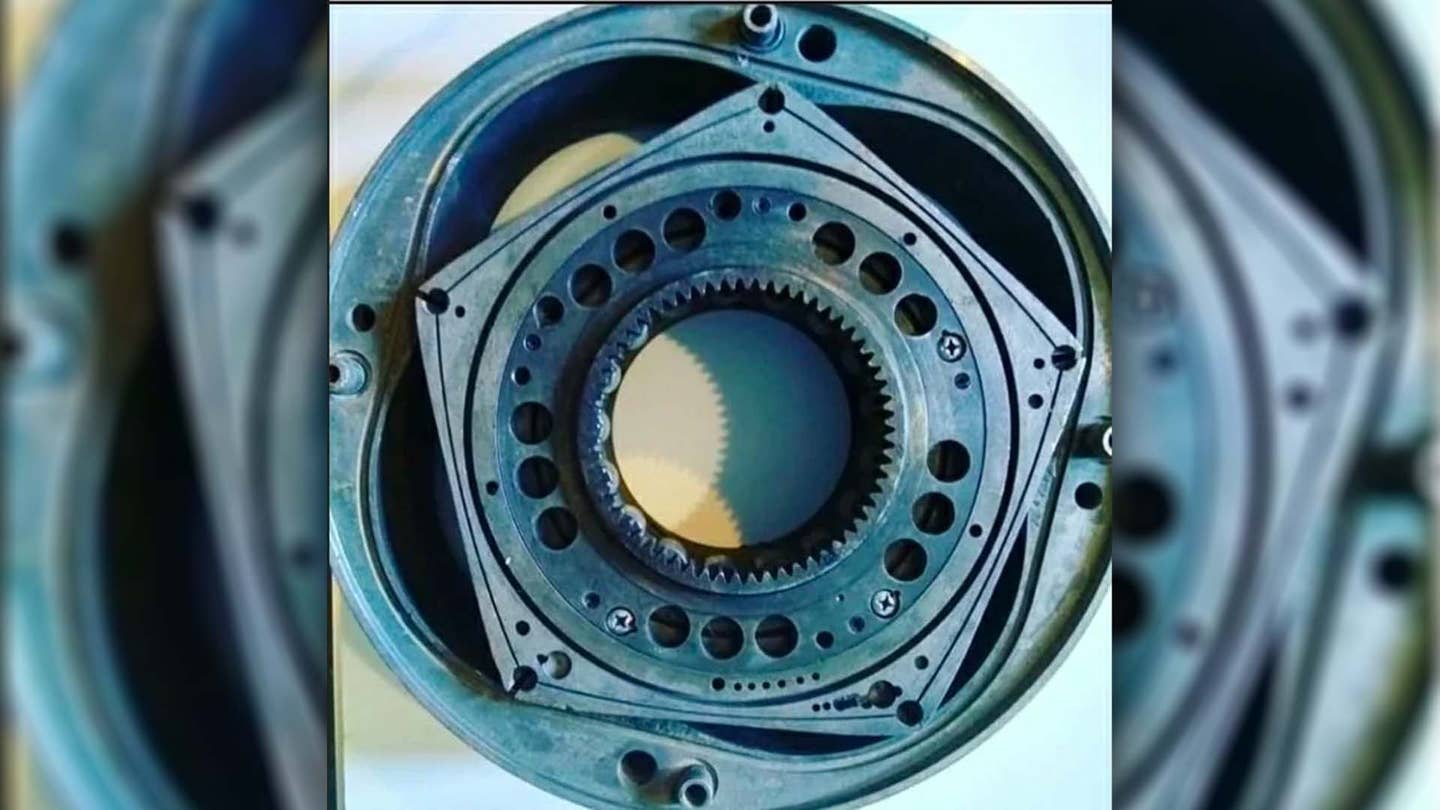Soviet Five-Pointed Rotary Is the Final Boss of Wankel Engines
The Russian Pentastar is pretty different from its American counterpart.

Rotary engines have almost completely gone out of production, but they're still beloved by enthusiasts. Eschewing pistons for a spinning three-sided rotor, they rev to the moon and sound great doing so. Most powerful rotaries are usually just a bunch of these three-sided rotors mated together, but one Russian design that caught our eye does away with multiple rotors, opting instead for a single five-sided rotor with four combustion chambers. We've never seen anything like it.
There's not a lot of information available about this engine. Most of what we know is the same basic facts repeated over and over again. It was allegedly designed to propel a Soviet-era torpedo and was fueled by hydrogen peroxide as opposed to conventional fuel like gasoline, kerosene, or diesel. No air for combustion underwater, of course. Output was reportedly 730kW, or about 979 horsepower. Beyond that, the trail gets pretty cold.
Some speculate it was designed and built by the Russian aircraft engine company Aviadvigatel. It currently produces a variety of jet engines, but it has its roots in the pre-war era building Wright Cyclone radial piston aircraft engines under license. It allegedly produced rotary engines for aircraft during the 20th century, although it seems like that was a conventional three-sided rotor engine. This company seems to be one of the few Russian outfits that made rotaries, which may be why the connection was drawn.
Soviet interest in rotary engines was allegedly pretty widespread. Russian military engineers reportedly found the configuration appealing because of its ability to run on low-octane fuels. Information on this engine is likely available somewhere as a part of translated technical articles and documents published in the USSR. The U.S. government obtained and translated a lot of papers and journals concerning Soviet engine technology into English. According to rotarywiki.com, some of these documents are available for purchase from the federal government, although they are very expensive. Christmas is just around the corner, though. Maybe I'll ask Santa.
If any members of the commentariat have more information, please share. I don't speak Russian and the incentive to learn these days is admittedly not what it used to be. I would love to learn more about this engine.
Got a tip or question for the author? You can reach them here: peter@thedrive.com
